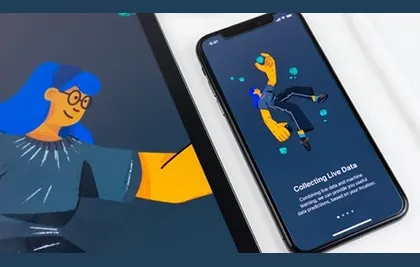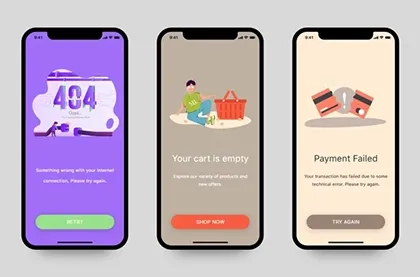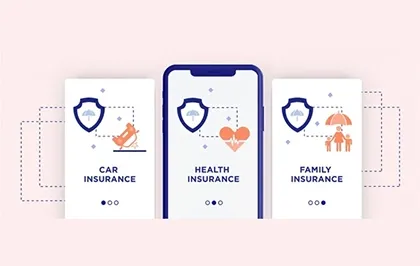Why Animations Are Crucial Interface Elements
As previously mentioned, animation is a highly useful tool that performs the following functions:
- A Navigation Function, in other words – simplifying application interaction;
- A Marketing Function. Successful animation design can attract user attention and become a key factor in choosing your application.
- A Decorative Function. Users love beautiful and visually appealing things, and animations for apps help you create the desired effect.
Overly complex and fantastical animation effects only confuse the user and create a negative feeling.
Most Popular Animation Types
There are various types of animations, each playing its own role.
1- User Action Feedback
Imagine: a user taps your app's button or performs another action expecting certain visual effects, but nothing happens; visually everything remains the same! This undoubtedly leads to user dissatisfaction. Ultimately, we all want the world to meet our expectations, and this applies to apps as well.
This item in the list of animation types for mobile apps implies visual feedback. The app must engage with the user, reacting to their actions: a button changes color when pressed, an image zooms or moves when swiped right or left, etc.
Based on the above concept, the user can control home lighting with a smart app. The animated interface reacts as expected: the light ring expands and contracts with the user's action.
Here's another great concept illustrating the idea.
Take a look at another piece of interface animation, also demonstrating correct user interaction.
2- Simplifying Navigation
One goal of Android and iOS animations is to simplify navigation. Smartphone screens have limitations; some navigation elements might be hidden – in which case using animation tricks is very helpful so the user can see what was previously concealed.
3- Animated Hints
Generally, this serves the same purpose as item #2 – guiding the user through the app.
However, we provide clearer guidance by showing users the interface structure with animation tools.
If you're unsure whether users can guess the consequences of clicking a button, using animation in your app is essential.
Here's a concept illustrating the above.
4- Animations Simulating Real-World Interactions
One goal of interface animation is to create the illusion of real-world objects. A prime example is the standard iOS Weather app showing current weather. Such iOS animation makes you feel like you're looking out the window, seeing rain, calm skies, or drifting clouds.
5- System Animations
When discussing animation types, remember that app operation involves various system processes, and these also require animation.
Where might this need arise? Imagine a user listening to an audio file but staring at a blank screen. The solution is an animated screensaver showing that audio is playing:
There's also the popular iPhone "pull to refresh" feature. This is essential for updating the app screen and requires animation:
Look at the Twitter example!
Another system process is downloading specific content. We recommend livening up those tedious user minutes with animations:
Additionally, you can create animations for in-app notifications.
We could continue indefinitely, as many similar system processes exist, each requiring its own dynamism.
6- Fun Animations for Apps
We're now discussing the decorative aspects of animations. These dynamic elements don't serve a specific functional purpose; they're used to highlight the app, attract user attention, and make it memorable.
However, such animation design shouldn't detract from your app's core features.
In the image above, we see various animation types, including purely decorative ones (the shoe movement). This effect is quite interesting and visually appealing.





